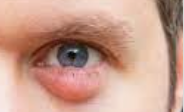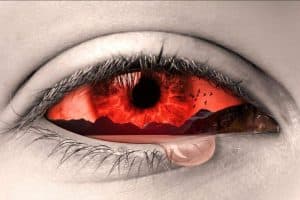Tear osmolarity simply indicates the ‘saltiness’ of your tears, but could this be the solution for your dry eyes?
We all know that salt water or water from the ocean can be beneficial for our eyes, however excess salt in our tears could lead to serious and life-long eye damage, visual discomfort and even loss of vision.
This article explains this new concept in eye care and how eye doctors are now utilizing this to enhance their diagnosis and treatment of ocular surface disease (OSD) and dry eyes.
What is tear osmolarity?
Tear osmolarity is a measure of the salt content of a person’s tears. High salt concentration is known as hyperosmolarity.
This is now among the most accurate ways to predict dry eye syndrome, as there is a strong link between excess salt in your tears and dry eye syndrome (DES) or ocular surface disease (OSD).
Statistics published on the TearLab Osmolarity System, a widely used tool for diagnosis of dry eye syndrome, found that 89% of patients who test positive for hyperosmolarity are also found to have dry eye syndrome.
As an objective measure of dry eye, hyperosmolarity is a signature feature that characterizes dryness. Aa reading of higher than 316 MOsm indicates high salt levels in your tears.
Why are salty tears linked to dry eyes?
In a healthy ocular system, tears are constructed of three components or layers.
These components allow the tears to properly spread over and moisturize the eye, and avoid rapid evaporation. This ensures that the eye doesn’t dry out, leaving it vulnerable to injury, infection and an eye condition known as ocular surface disease.
The three components of healthy tears are:
- Water – also called the aqueous layer, which helps the tears spread over the eye
- Oil – the lipid layer, which helps prevent evaporation
- Mucus -which helps the tears coat the eye and stick to it
These components allow the tears to properly spread over and moisturize the eye, and avoid rapid evaporation. This ensures that the eye doesn’t dry out, leaving it vulnerable to injury and infection.
Hyperosmolarity most often occurs when the lipid layer is too thin, causing the water in the tears to evaporate too quickly.
The remaining water will then have a higher concentration of salt.
A study published in Ocular Surface Disease: Cornea, Conjunctiva and Tear Film, (2013) suggests that this elevated salt level leads to chronic inflammation of the eye, causing dry eye syndrome.
SEE RELATED: Burning Eyes at Night
If regular eye drops have not improved your dry eyes, make an appointment with an eye doctor near you to discuss tear osmolarity testing.
Do I have high tear osmolarity?
If you have tried regular eye drops and you still suffer from dry eyes, you may have excessively salty tears.
Signs and symptoms of high tear osmolarity may vary slightly, depending on the underlying cause, often worsening at night or in windy or dry conditions.
The common signs and symptoms of high tear salt levels include:
- Chronic dry eye that does not respond to regular eye drops
- Dry, gritty feeling in the eyes
- Light sensitivity
- Itchy eyes
- Blurry vision
Is tear osmolarity accurate?
Tear osmolarity is among the most accurate ways to predict dry eye syndrome, as it provides measurable physiological data for dry eye diagnosis.
Relying on symptoms alone can be misleading, since several conditions share the symptoms of dry eye syndrome.
A recent study presented at the 8th International Conference of The Tear Film & Ocular Surface Society found that, among patients who had normal tear osmolarity, only 4% were found to have dry eye syndrome.
In these cases, nearly 50% of patients were diagnosed with blepharitis or allergies, while more than 10% were diagnosed with contact lens intolerance or computer vision syndrome, which lowers the rate of blinking.
This study illustrates the importance of accurate diagnosis, as these conditions, while similar in presentation to dry eye syndrome, may require different treatments.
LEARN MORE: Guide to Dry Eye
If your dry eyes are impacting your life, make an appointment with an eye doctor near you for an evaluation, as salty tears may be the cause.
There is a strong link between excess salt in your tears and dry eye syndrome (DES) or ocular surface disease (OSD).
Tear osmolarity, or ‘salty tears’, is now among the most accurate ways to predict dry eye syndrome, which can be treated.










